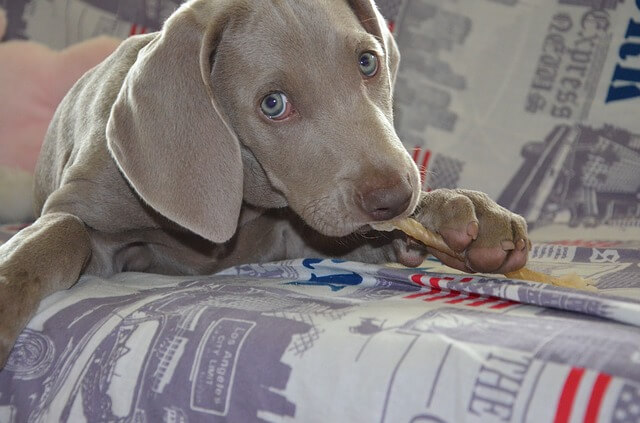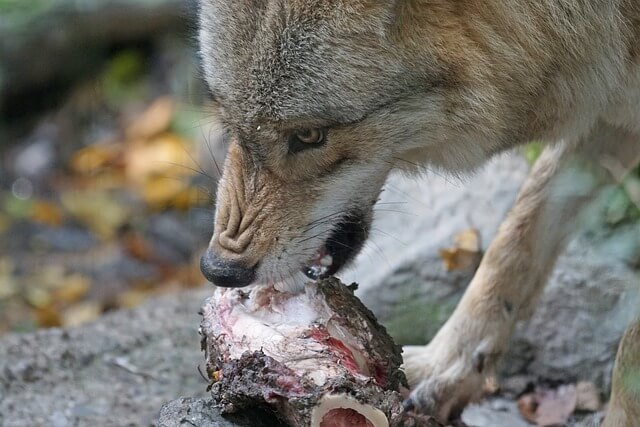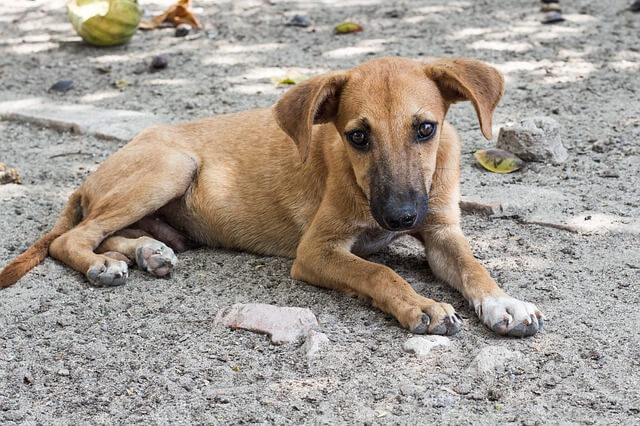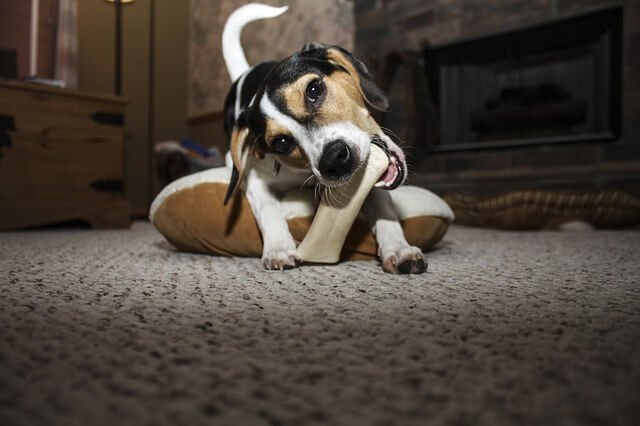Is your dog possessive of his toys, bones, treats, beds, or even his favorite humans? Behaviorists refer to this as resource guarding and it can be very a serious problem. Some dogs are so intent on protecting an item that they become aggressive towards other pets or people in the home. Although the reasons behind this behavior are unclear, professional trainers have methods that can help you prevent accidental bites and rehabilitate your possessive pup.

Robin Bennett is a knowledge assessed Certified Professional Dog Trainer (CPDT-KA) and the author of All About Dog Daycare. She also co-authored two other books – Off Leash Dog Play and Knowing Dogs Staff Training. Bennett shared her theories on resource guarding and how owners can recondition their dogs away from this dangerous behavior.
“It’s hard to say why dogs guard other than the fact that they find something valuable,” she said. “WHY they find it valuable is a matter of interpretation. Some things taste good (food, treats, etc), some dogs like privacy and space and will guard locations (doors, beds, furniture), and some dogs like attention and will prevent others from coming near their favorite person.”

Resource guarders will give several warning signs before they actually snap, but they can be subtle. Before you try to take something away from your dog, watch for flattened ears, wide, staring eyes and repetitive lip licking. If these warning signs are unheeded, the dog will snarl and finally, snap.

Protecting their possessions is a natural behavior in wolves and wild dogs. Food is limited, and they often must protect their portion from opportunistic pups looking to snag a little extra meat. This mindset may have carried over to our domestic fur-friends causing them to develop object guarding behaviors throughout puppyhood and adolescence.

Many trainers believe there must also be a genetic component, but there is no definitive proof that any particular breeds are predisposed to resource guarding.
“There are breeds who are bred to guard things, but dogs that guard livestock don’t necessarily guard food,” Bennett said. “There are also dogs that will guard things from people but not from other dogs and vice versa. So I’m not sure how genetics plays into all those various situations.”

Object guarding could also be a learned behavior or something that stems from environmental factors in the dog’s life. Those that have suffered abuse, neglect, or lack of resources as strays may be more inclined to hoard them once they finally become available.

Bennett also notes that owners may inadvertently contribute to their dogs’ object guarding.
“I think the saying ‘it takes two to tango’ comes to mind here. You can probably do things to create a stronger sense that a dog needs to guard things. For instance, constantly stealing things from him, teasing him, scolding him for grabbing things, etc., might make things more valuable to him (and increase his desire to guard).”

In order to recondition a resource guarder, most trainers – including Bennett – recommend a system of exchanging valued objects for treats.
“The best way to work with a dog who guards is to practice trading objects, making the dog see that there is great value in giving things up (give something up and you get something better PLUS you get the original object back too), and avoid punishing the dog for guarding,” Bennett explains. “This is counter intuitive, but punishing the dog will only suppress his guarding behaviors which could cause him to escalate his level of aggressive response in the future. If you have a dog who guards, work with a local trainer who uses positive reinforcement methods.”

Seeking the help of a professional trainer or behaviorist is not only the best way to ensure success, it is also the safest. Because dogs that object guard can become aggressive, attempting to deal with this issue on your own is not recommended.
